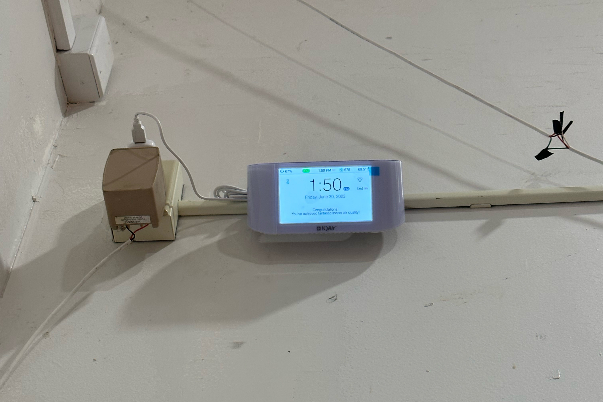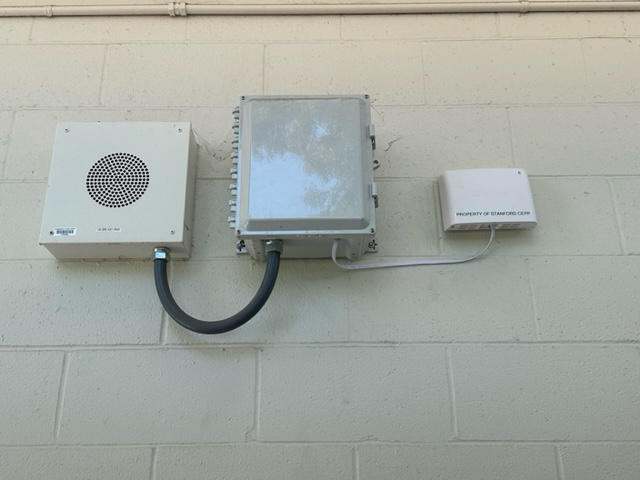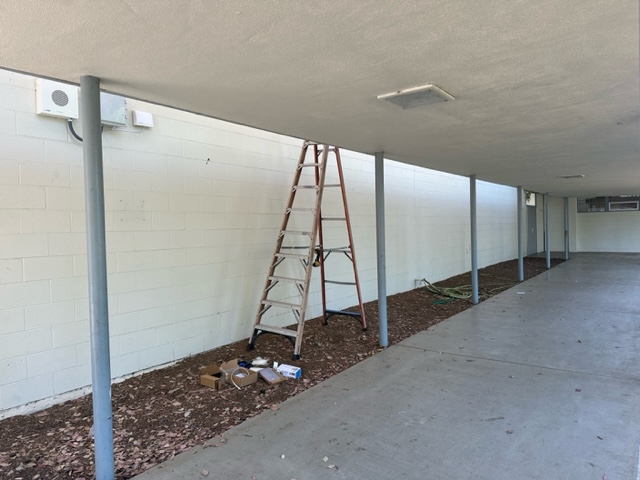After the hazy skies and unhealthy air quality during recent fire seasons, Ravenswood City School District classrooms and common areas were outfitted with sensors last week as part of a five-year Stanford University study. Researchers hope to better understand the indoor air quality of K-12 schools to help mitigate the health impacts of wildfire smoke.
The project, "Creating Clean Air Spaces across K-12 Schools in California," will look at areas across the state at high risk of exposure to wildfire smoke, including Ravenswood. The study began June 26 and is expected to wrap up on June 25, 2028. The school board gave the go-ahead to participate in study at a June 22 meeting.
Currently, information on indoor air quality and temperature in schools are not routinely collected, according to Jessica Yu, a postdoctoral fellow for the Climate and Energy Policy Program. Yu's research focused on best practices for protecting vulnerable populations from the health impacts of wildfire smoke.
"Our hope is to work with superintendents and facility managers to create evidence-based guidelines on school operations during high smoke days," she said in an email. "Should schools close during a wildfire smoke event? From a health perspective, where should students go?"
Classroom air quality came center stage during the COVID-19 pandemic when students returned to school, with officials hoping to use high quality Heating, Ventilation and Air Conditioning (HVAC) systems to reduce virus spread.
Researchers plan to compare the indoor air quality at schools to the homes of schoolchildren.
"Our overall aim is to make the case to policymakers for significant capital investment in upgrading HVAC equipment and installing portable air filters across Californian schools," Yu said.
The Stanford Center for Innovation in Global Health put out an informational sheet in 2018 that notes that wildfire smoke contains fine, inhalable particles, as well as dangerous levels of heavy metals and other toxins.
"It may be as much as 10 times more dangerous for kids than other forms of air pollution," the resource notes. "Wildfire smoke can increase emergency room
visits for asthma and upper respiratory infections in kids. It can also reduce immune function, lead to cardiovascular and lung diseases later in life, and create long-term
cancer risks. Since air pollution levels are also associated with reduced school performance, improving schools' air quality doesn't just help protect kids' health — it also safeguards their learning."
How the study will work
The researchers will link indoor air quality data from AirVisual Pro Indoor Sensors from schools with household survey data.
Yu and her team will ask families about protective behaviors during smoky days, negative experiences, health effects from wildfire smoke, residents' sources of knowledge about wildfire smoke and poor air quality, and indicators of overall household well-being.
Stanford will also ask: How do residents learn about wildfire smoke and poor air quality?
Participant involvement in this research study is strictly voluntary and provides confidentiality of research data, according to researchers.
In addition, Stanford will gather information on the schools, including classroom size and HVAC age.
Long term, Ravenswood is likely to be able to keep the air quality sensors, according to the district.





Comments